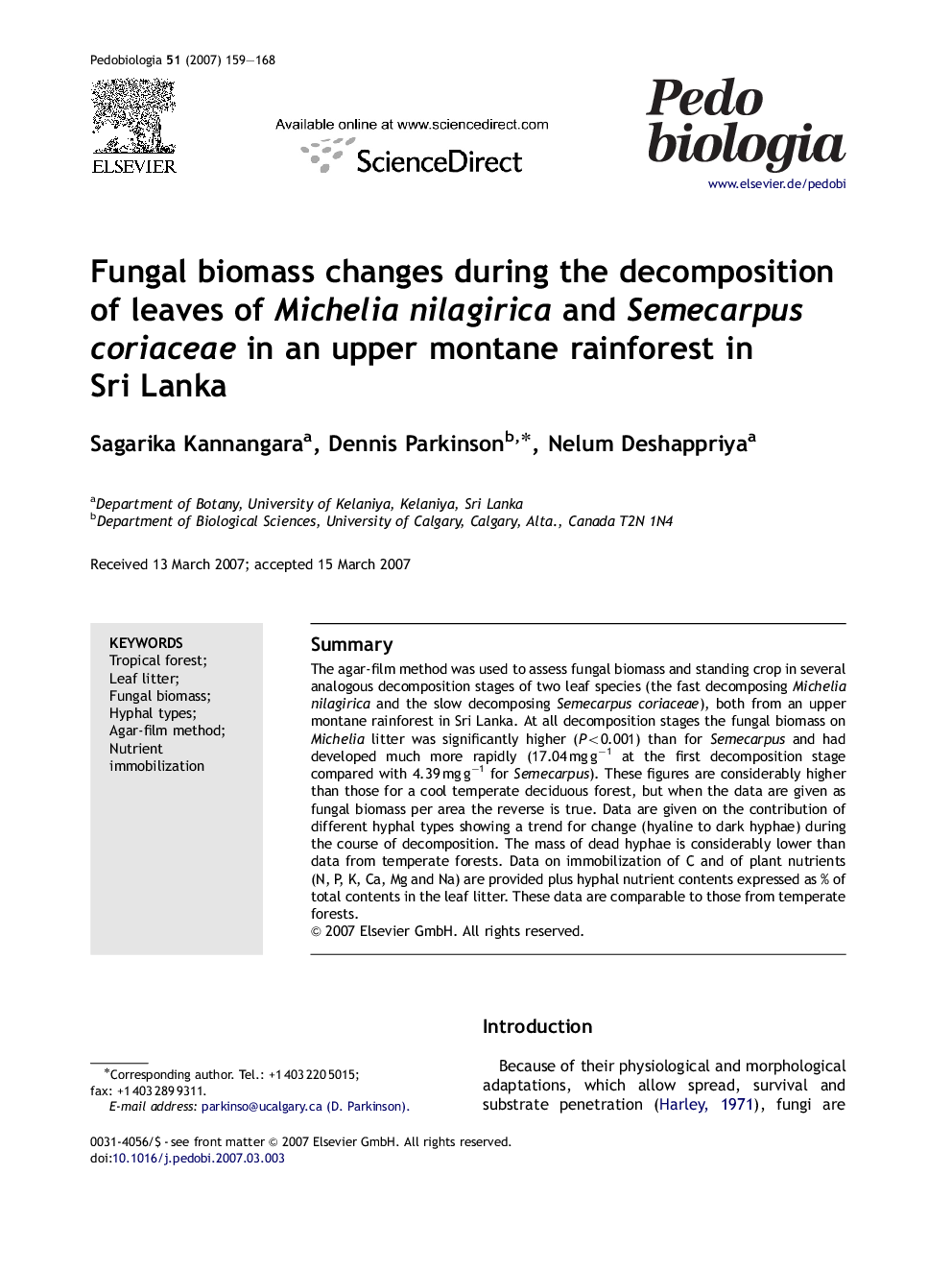| Article ID | Journal | Published Year | Pages | File Type |
|---|---|---|---|---|
| 2061271 | Pedobiologia | 2007 | 10 Pages |
SummaryThe agar-film method was used to assess fungal biomass and standing crop in several analogous decomposition stages of two leaf species (the fast decomposing Michelia nilagirica and the slow decomposing Semecarpus coriaceae), both from an upper montane rainforest in Sri Lanka. At all decomposition stages the fungal biomass on Michelia litter was significantly higher (P<0.001) than for Semecarpus and had developed much more rapidly (17.04 mg g−1 at the first decomposition stage compared with 4.39 mg g−1 for Semecarpus). These figures are considerably higher than those for a cool temperate deciduous forest, but when the data are given as fungal biomass per area the reverse is true. Data are given on the contribution of different hyphal types showing a trend for change (hyaline to dark hyphae) during the course of decomposition. The mass of dead hyphae is considerably lower than data from temperate forests. Data on immobilization of C and of plant nutrients (N, P, K, Ca, Mg and Na) are provided plus hyphal nutrient contents expressed as % of total contents in the leaf litter. These data are comparable to those from temperate forests.
